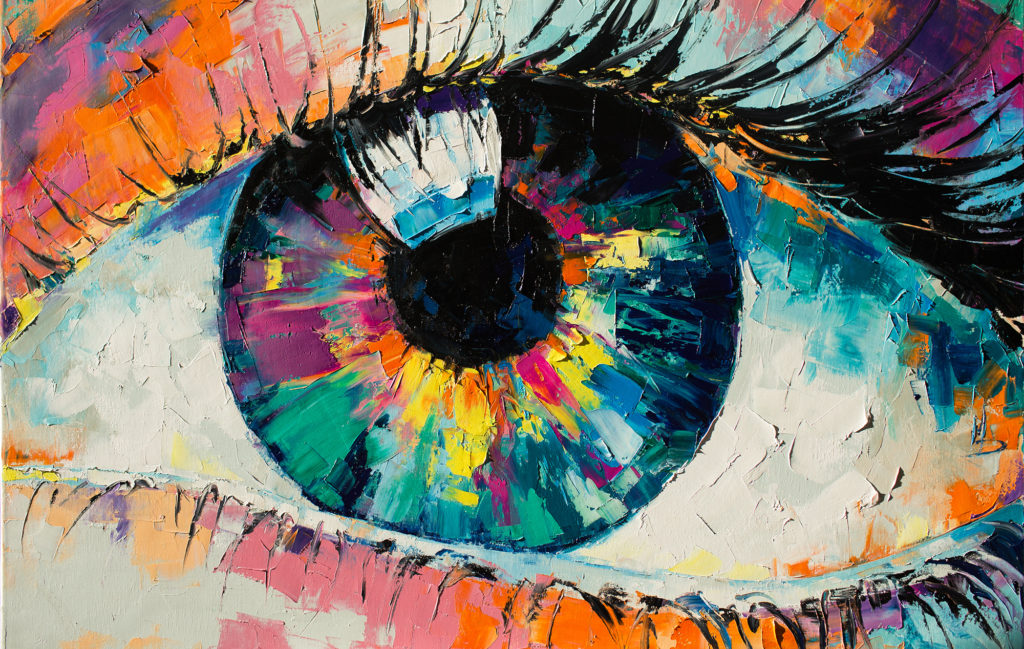Introducing the Most Intriguing Trump Art Pieces of the Years
Introducing the Most Intriguing Trump Art Pieces of the Years
Blog Article
Digging Into the Diverse Globe of Artistic Expression: From Surrealism to Abstract Realism
In the world of imaginative expression, from the dreamlike landscapes of surrealism to the detailed play of light and type in abstract realistic look, artists have actually constantly pressed the limits of imagination and creative imagination. Each movement holds a distinct lens through which the world is viewed and analyzed, offering a peek into the midsts of human feeling, assumption, and thought. As we check out the multifaceted globe of art, we are presented with a tapestry of styles, techniques, and approaches that test our understanding and prompt contemplation. The trip via these varied forms of imaginative expression guarantees to untangle an abundant tapestry of aesthetic storytelling and intellectual inquiry that captivates the mind and stirs the soul.
Surrealism: Unleashing the Subconscious
Surrealism, a progressive creative activity of the 20th century, delved right into the midsts of the subconscious, revealing a globe of dream-like imagery and unique juxtapositions. Pioneered by musicians like Salvador Dali, René Magritte, and Joan Miró, Surrealism looked for to test the standard means of seeing and understanding art. With methods such as automatism and dream evaluation, Surrealist musicians aimed to use the subconscious mind to reveal surprise realities and needs.
Among the crucial elements of Surrealism was the focus on the illogical and the incredible. By combining unanticipated aspects in their works, Surrealist artists intended to develop a feeling of disorientation and shock in the viewer. This interruption of reasoning and factor was implied to provoke a much deeper expedition of the subconscious and the enigmas of the human subconscious.
Abstract Realism: Redefining Understanding
Testing traditional artistic borders, Abstract Realism redefines understanding via the blend of well-known aspects with abstract types. This innovative technique to art integrates the representational accuracy of realistic look with the innovative freedom of abstraction, providing viewers a special visual experience that triggers them to question their assumption of truth.
In Abstract Realism, artists strive to capture the significance of their subjects while additionally instilling their deal with a feeling of deepness and intricacy via abstract elements. By blending the aware of the strange, these artists invite target markets to involve with their items on numerous levels, motivating them to check out the nuances of type, structure, and shade.

Cubism: Fragmenting Fact
Utilizing fragmented point of views and geometric forms, Cubism transformed the artistic representation of reality in the very early 20th century. This method not only deconstructed fact yet additionally highlighted the monotony of the canvas, leading the method for future abstract art movements.

Cubism can be classified into two primary phases: Analytical Cubism, defined by monochromatic color schemes and detailed, fragmented kinds; and Synthetic Cubism, which included collage components and brighter colors into the compositions. Through these distinctive stages, Cubism affected not only paint however likewise architecture, layout, and sculpture. trump art. Its impact resounded throughout the art globe, motivating artists to explore new methods of representing the world and analyzing around them
Expressionism: Emotions on Canvas
Checking out the depths of human feelings with meaningful and vibrant brushstrokes, Expressionism emerged as a profound artistic activity in the very early 20th century. Unlike previous art motions that concentrated on showing the external world, Expressionism explored the interior realm of the musician's mind, aiming to stimulate raw emotions and provoke natural actions from visitors.
Expressionist musicians, such as Edvard Munch, Egon Schiele, and Emil Nolde, turned down conventional concepts of appeal and realism in support of distorting form and color to convey subjective sensations. Making use of overstated brushwork, strong shades, and distorted figures assisted produce a sense of unease, alienation, or passion in their works.
One of one of the most popular examples of Expressionism is Munch's "The Scream," which records the intense stress and anxiety and anguish of modern life with its swirling, altered number versus a blood-red sky. With their psychologically charged jobs, Expressionist artists sought to challenge conventional creative norms More Bonuses and supply a home window right into the stormy midsts of the human heart.
Contemporary Art: Developing Viewpoints

One of the specifying attributes of modern art is its continuous development and ability to adjust to changing social landscapes. Musicians are significantly including innovation right into their method, obscuring the lines between the electronic and physical realms. This fusion of tools enables innovative means of storytelling and engaging with audiences in a much more interactive fashion.
In addition, contemporary art often offers as a system for social commentary, addressing pushing problems such as identification, politics, and the atmosphere. Artists are utilizing their job to stimulate crucial conversations and provoke idea, clarifying the complexities of the globe we live in. As perspectives proceed to progress, modern art continues to be a dynamic and influential pressure in shaping our cultural landscape.
Conclusion
Finally, the globe of creative expression includes a large array of motions and designs, each with its very own unique method to sharing meaning and feeling. From surrealism's exploration of the subconscious to abstract realism's redefining of understanding, and from cubism's fragmentation of fact to expressionism's portrayal of emotions, art proceeds to develop and challenge viewpoints - trump art. Contemporary art reflects the ever-changing globe we stay in, using brand-new ways to translate and understand the complexities of our fact
As we check out the multifaceted world of art, we are offered with a tapestry of styles, pop over to this web-site methods, and approaches that test our understanding and prompt consideration. Its impact resounded across the art globe, motivating musicians to discover brand-new means of representing the world and interpreting around them.

Report this page